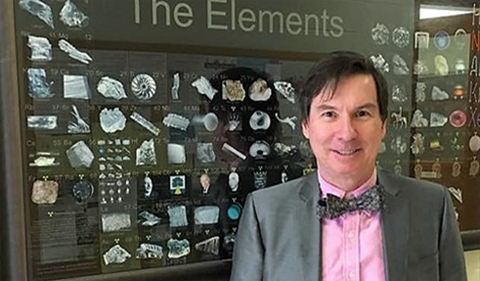Dr. Peter Harrington, Professor of Chemistry & Biochemistry at Ohio University, was elected to the Governing Board of the Coblentz Society and will serve a four-year term.
The Coblentz Society was found in 1954 and its mission is to foster the understanding and application of vibrational spectroscopy. Harrington was described as a guru in the field of vibrational spectroscopy and a longtime stalwart of the Coblentz Society.
He also was invited lecturer for the 3rd Winter School of Chemometrics, where he gave two lectures on machine learning on Feb 1 and 2. Machine learning, also known as artificial intelligence, is currently disrupting technology and will impact all areas of society. Harrington has been working in this area for 40 years.
He also had several recent publications. Alessandra Paul, a chemistry master’s student in his lab, was the lead author on a review of Chemometric Studies of Metabolomics Using Chromatography-Mass Spectrometry that was published in the high impact journal Trends in Analytical Chemistry.
Together with Professor John Staser in Chemical Engineering, Harrington and colleagues published a Techno-economic Analysis for Integrating an Electrochemical Reactor into Lignocellulosic Biorefinery for Production of Industrial Chemicals and Hydrogen in Applied Biochemistry and Biotechnology. This project involves the conversion of biomass waste into useful chemicals. Hydrogen is an important energy source that can be captured and used to power the electrolysis.
Post-doctoral researcher Jianghao Sun in Harrington’s lab was the lead author on a paper published in the Journal of Agriculture and Food Science. The paper is the Study on Human Urinary Metabolic Profiles After Consumption of Kale and Daikon Radish Using a High-resolution Mass Spectrometry-based Non-targeted and Targeted Metabolomic Approach. This study examined Brassica vegetables, which are one of the main sources of phenolics and glucosinolates in the human diet. The secondary metabolites of these compounds are thought to provide some benefits to human health, so identification and profiling them is a significant contribution. Four of the metabolites were observed for the first time in human urine.
Harrington and colleagues at Zhengzhou University in China co-authored a paper developing a novel dopamine sensor. This work, Electrostatic Repulsion Strategy for High Selective and Sensitive Detection of Dopamine in the Presence of Uric and Ascorbic Acid in the journal Talanta. This research developed a dopamine sensitive electrode that was unaffected by the presence of two common interfering compounds. This new system can be used for in vivo measurements of this important neurotransmitter without generating false-positive results.


















Comments